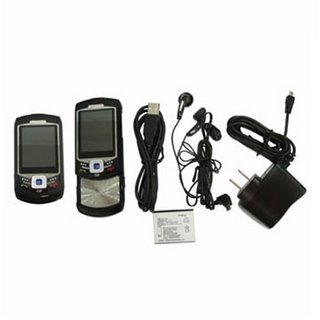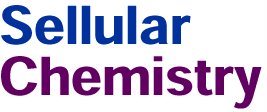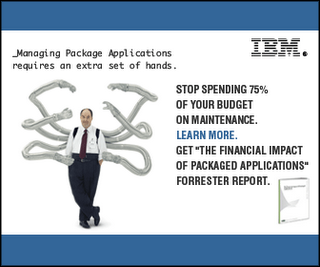

What people are saying...
"I never had in the last 5 years such service as provided by your company... It is a great deal to get cash for old cell phone. What a pleasure...many thanks," - M.J., PA
"Dear SimplySellular: George and I received our check today for our used cell phones. Thank you for your prompt and promised service. Now that we know how you conduct your business, we will spread the work to our friends, colleagues and neighbors that you are trustworthy to do business with. Thank you again," - George and Sally, IL
 An intranet promised to give Wang's salespeople everything they dreamed of. But getting one built required the biggest sales job yet.
An intranet promised to give Wang's salespeople everything they dreamed of. But getting one built required the biggest sales job yet.By Cheryl Dahle Ralph Jordan has what several people on the Knowledge Exchange team describe as a "presence." He speaks with a quiet confidence that implies not only that he is right but that he knows his listener will come to agree. "You can take a negative experience, which is a problem, and turn it into a positive experience if you fix it quickly and you communicate." -Ralph Jordan Before long, even the sales reps, who were known for their skepticism, were won over by the system's benefits. Finding it Online
BBN Corp.(http://www.bbn.com/
IBM Corp.(http://www.ibm.com/
Informix Software Inc.(http://www.informix.com/infmx-cgi/Webdriver
Lotus Development Corp.(http://www.lotus.com/)
Microsoft Corp.(http://www.microsoft.com/)
Wang Laboratories Inc.(http://www.wang.com/)

Not everyone appreciates the value of a clean, crisp original document. Wang Software’s Jeff Hausdorf is someone who did, and he took excellent care of his hoard of fresh-from-the-printer sales materials. Hausdorf, Wang’s Southeast District partner development manager, knew you couldn’t pitch a new customer using product data sheets with blobby letters and photocopied lint bits so big that the page looked like a Rorschach test. So he encased his originals in plastic sleeves and stored them on a special shelf in his home office. He could sometimes make do with an exceptionally good first copy (stored on the next shelf down) by spending some quality time with a bottle of white-out. The thing Hausdorf dreaded most was trying to find a new original. At Wang corporate headquarters in Billerica, Mass., it could take a week or two to locate the person who could deliver the document he needed. While Hausdorf queued up in the Wang information bread line, hungry customers went to competitors. "You were dependent on how good a filing system you kept," Hausdorf says. "And if you didn’t know about the existence of a particular data sheet, there was no way you were going to find out about it. You just missed out."
Advertisers
That was just the beginning. Field reps couldn’t get their e-mail, let alone log onto the company mainframe to access the meager collection of poorly labeled, outdated documents there. Sales support people were constantly tied up on the phone with reps who were pleading for information. All in all, it was a frustrating exercise, and it was particularly embarrassing because the product that all of this dysfunction was trying to sell was workflow software—tools to help other companies get a handle on their processes. In part, the difficulties were a by-product of a sales model that necessity built. When Wang Software’s parent company, Wang Laboratories Inc., emerged from bankruptcy in September 1993, it had shed more than $1.3 billion in debt as well as 7,000 employees and virtually all of its market credibility. After the reorganization, Wang Software was reborn as a lean and hungry new business unit—with few sales people and even fewer sales offices. But by 1994 the field sales and sales support force had grown to 150 people, all of whom had complaints about the information rationing. What Wang executives finally did in response changed not only the way sales reps sold but the way the software business unit produced and distributed information. Pulling off that kind of shift in collective thinking wasn’t easy. It was harder than trying to teach an old dog new tricks. It was like trying to resurrect Old Yeller and get him to polka. ‘X’ Marks the Spot Oct. 9, 1994. That was the day Ralph Jordan, director of sales operations at Wang Software, decided that the information problem child was his to adopt. He called a meeting in the old Wang Towers in Lowell, Mass., with project manager Neena Mathur, and together they listed the new system’s goals: to allow the field to get information it needed, when it needed it, from corporate and to let the field share its experience troubleshooting and selling with peers and the company. They also drew up a list of requirements: that people be able to get information whenever they want it and in a form that they can use; that the system be compatible with the technology of the sales force and business partners, such as Big Six firms and systems integrators; that the information be up-to-date all the time, with no pileup in the in-box; and that the interface be easy enough so as to make training superfluous. Jordan approached the whiteboard and drew a "V" with the open end facing left to indicate information traveling away from the company. Then he drew a mirror image of the "V" next to it, apexes joined, to represent information coming in from the field. He circled the "X" intersection of the two. "This is the point where you have perfect knowledge," he told the others. And so the idea for the Wang Knowledge Exchange intranet was born. Ralph Jordan has what several people on the Knowledge Exchange team describe as a "presence." He speaks with a quiet confidence that implies not only that he is right but that he knows his listener will come to agree. For that reason, he makes an ideal evangelist for new and not-entirely-proven solutions. That was a good thing, because as the project team considered the requirements for the new system, World Wide Web technology emerged as the most likely salvation. Jordan knew that a project as far-reaching and demanding as a corporate intranet would need executive sponsorship. First, he talked to his boss, Steve Quehl, senior vice president of field operations, about the options the project team was discussing. He even gave Quehl brief demonstration of what the Internet could do. It turns out that Jordan wasn’t Quehl’s only mentor; his children were also making the case for cyberspace, using the Net to research their homework. "I suppose I linked the concept of what my children were doing to what salespeople would need on a day-to-day basis to get their jobs done," says Quehl. "Once I got sold, it was a matter of painting the vision for other people who could see past the costs of putting this in place and focus on more of the benefits." So Quehl began selling the project to the top brass—which included William Everett, vice president of finance, David Goulden, senior vice president for business development, and eventually the new president of Wang Software, Robert Weiler, who signed on in December 1995. Jordan also knew he had to whip up some rank-and-file enthusiasm about the potential of the Knowledge Exchange if he expected people to embrace the extra work that such an information-sharing system would require. "At this point this was ‘Ralph Jordan's Program,’" Jordan recalls. "And, well, it wasn’t going to be successful as Ralph Jordan's Program. So I had to extend the ownership. And you do that by bringing people in early on and keeping them in." All told, about 22 people were involved in various curves of the loop, although the core team was limited to about 10. Resistance and Persistence
No comments:
Post a Comment